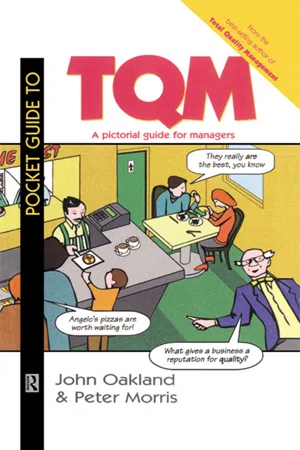
- 108 pages
- English
- ePUB (mobile friendly)
- Available on iOS & Android
eBook - ePub
Pocket Guide to TQM
About this book
Another new book in the popular and original series of pictorial guides - John Oakland cuts through the complex concepts and confusing jargon associated with implementing Total Quality, and Peter Morris presents the information in his inimitable pictorial style. This book will show students and managers what they need to understand about TQM in the simplest, clearest and most memorable form.
Professor John Oakland is undoubtedly the British guru of quality management. Following a successful industrial career in research and production management, he has developed a pragmatic approach to introducing TQM which he and his colleagues have used successfully in literally thousands of organizations. He is founder and Executive Chairman of OAKLAND Consulting Plc. and Head of the European Centre for TQM at the University of Bradford Management Centre. Also published by Butterworth-Heinemann are John Oakland's bestselling Total Quality Management (now in its second edition) and Cases in Total Quality Management. Peter Morris is the creative force behind the illustrations in all Butterworth-Heinemann's pictorial guides. Originally trained as an art teacher, he spent several years as an industrial designer in Canada before returning to England to design educational and training materials for the University of Sussex. His experience working on industrial contracts convinced him, quite rightly, that cartoons are frequently the best way to illustrate the abstractions of business life.
Frequently asked questions
Yes, you can cancel anytime from the Subscription tab in your account settings on the Perlego website. Your subscription will stay active until the end of your current billing period. Learn how to cancel your subscription.
No, books cannot be downloaded as external files, such as PDFs, for use outside of Perlego. However, you can download books within the Perlego app for offline reading on mobile or tablet. Learn more here.
Perlego offers two plans: Essential and Complete
- Essential is ideal for learners and professionals who enjoy exploring a wide range of subjects. Access the Essential Library with 800,000+ trusted titles and best-sellers across business, personal growth, and the humanities. Includes unlimited reading time and Standard Read Aloud voice.
- Complete: Perfect for advanced learners and researchers needing full, unrestricted access. Unlock 1.4M+ books across hundreds of subjects, including academic and specialized titles. The Complete Plan also includes advanced features like Premium Read Aloud and Research Assistant.
We are an online textbook subscription service, where you can get access to an entire online library for less than the price of a single book per month. With over 1 million books across 1000+ topics, we’ve got you covered! Learn more here.
Look out for the read-aloud symbol on your next book to see if you can listen to it. The read-aloud tool reads text aloud for you, highlighting the text as it is being read. You can pause it, speed it up and slow it down. Learn more here.
Yes! You can use the Perlego app on both iOS or Android devices to read anytime, anywhere — even offline. Perfect for commutes or when you’re on the go.
Please note we cannot support devices running on iOS 13 and Android 7 or earlier. Learn more about using the app.
Please note we cannot support devices running on iOS 13 and Android 7 or earlier. Learn more about using the app.
Yes, you can access Pocket Guide to TQM by John S Oakland,Peter Morris in PDF and/or ePUB format, as well as other popular books in Business & Business General. We have over one million books available in our catalogue for you to explore.
Information
1 Quality chains
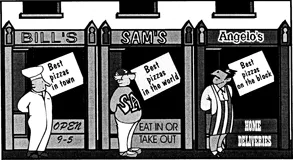
In business, a major driving force is the element of competition. A supplier's competitiveness is determined by the quality of its product or service.

Angelo's pizza business is more successful than his competitors. How does he do it?
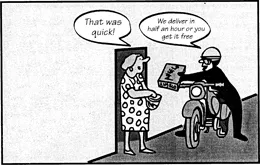
Angelo pays attention to satisfying his customers. He's constantly watching the reliability, delivery and price of his service.

On the knee of my mama I learned that the price of quality is constant vigilance
A company's reputation is based upon the customer's perception of its ‘quality’
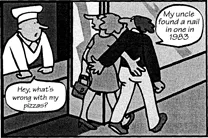
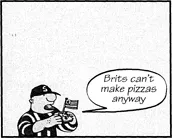
Once a business gets a poor reputation it is very hard to lose it - and it can easily become a national reputation..
So what is ‘quality’?

What is it that makes people prefer one product or service to others?
The experts and gurus have various definitions…
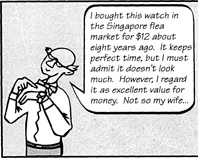
…but they all add up to the same thing:
Meeting the customer's requirements

I think a watch is a device for telling me the time.
She thinks a watch is essentially a piece of jewellery.
The successful business meets all its customers' requirements.
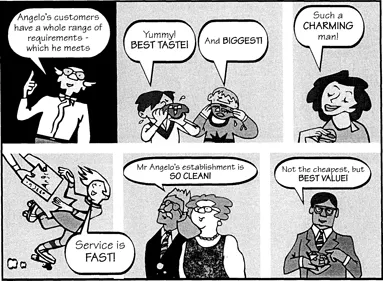
Another customer requirement which distinguishes good service is RELIABILITY…
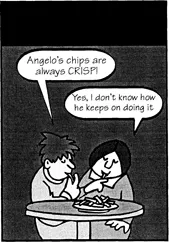
…and a readiness to put customers FIRST.
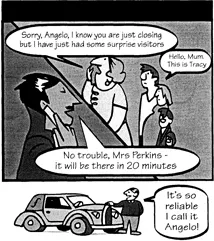
The aim of the supplier is to delight the customer
Angelo knows how to delight his customers by giving them more than they have asked for.
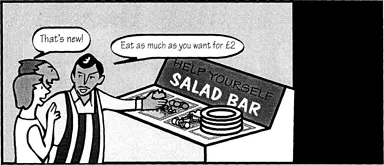
Defining the customer

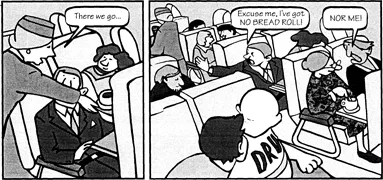

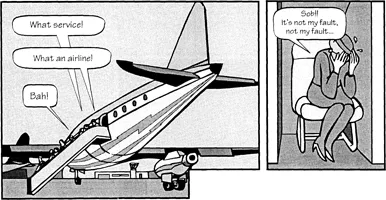

The stewardess feels she has let the passengers down…..
but someone has let her down
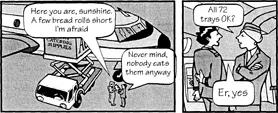
The passengers did not get their bread rolls because there was a break in the chain of supply. The customers were not delighted.
But our guru has a query.
But our guru has a query.
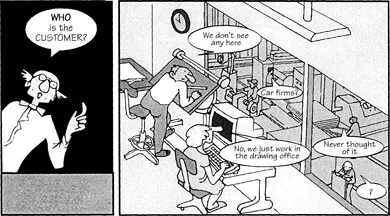
Our guru asks a simple question
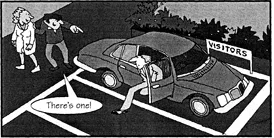
..and there seems to be a simple answer - somebody outside the firm. But…

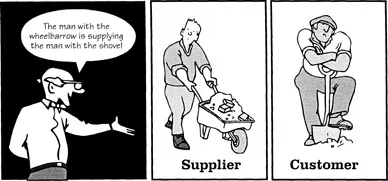
So, as well as outside customers there are inside customers

They are linked in the task of serving the outside customer
Throughout and beyond all organizations there is a series of quality chains of customers and supliers
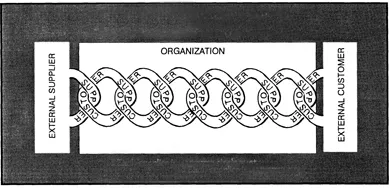
Each supplier is someone else's customer and each customer is someone else's supplier

If the quality chain is broken at any point, the effect of the break becomes apparent at the link with the outside customer
And the consequences of a small break in the internal chain can be proportionally greater when they get to the external customer/supplier Interface
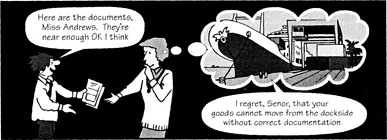

Quality must be built in from the beginning of an organization's activities, not “inspected in” at the end
The two-way street
Ensuring quality is a two-way process.
The supplier should meet the customer's requirements. At the same time the customer has a responsibility to make the job of the supplier as easy as possible within the limitations of the supplier.

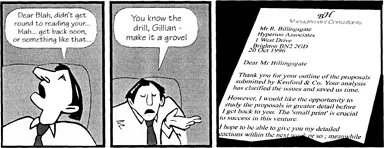
The boss was lucky to get...
Table of contents
- Cover
- Title Page
- Copyright
- Contents
- Introduction
- 1 Quality chains
- 2 Processes
- 3 The model
- 4 Commitment and culture
- 5 Communication
- 6 Systems
- 7 Tools
- 8 Teamwork
- 9 Implementation